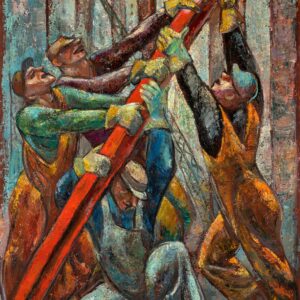 View Winners →
View Winners → 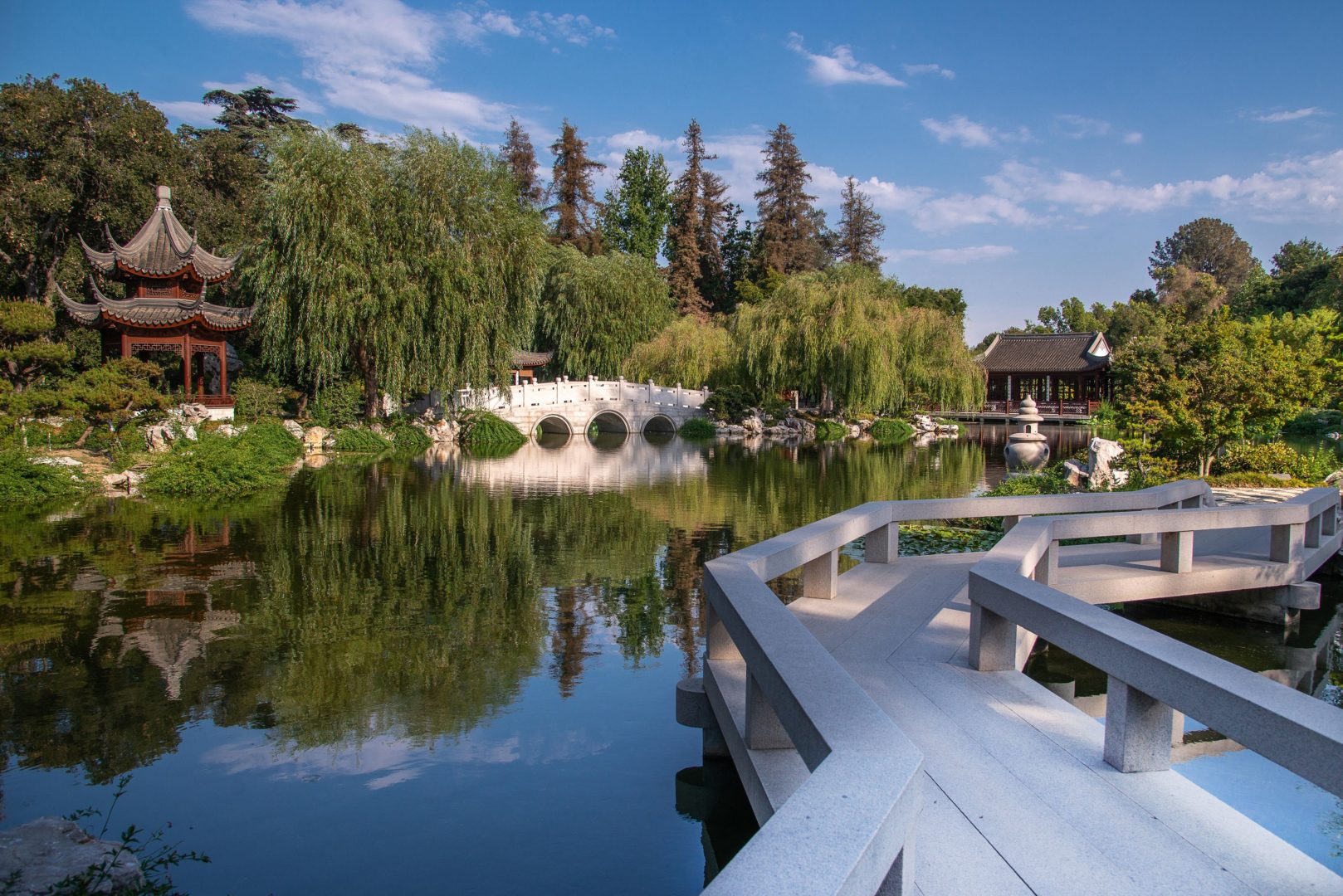
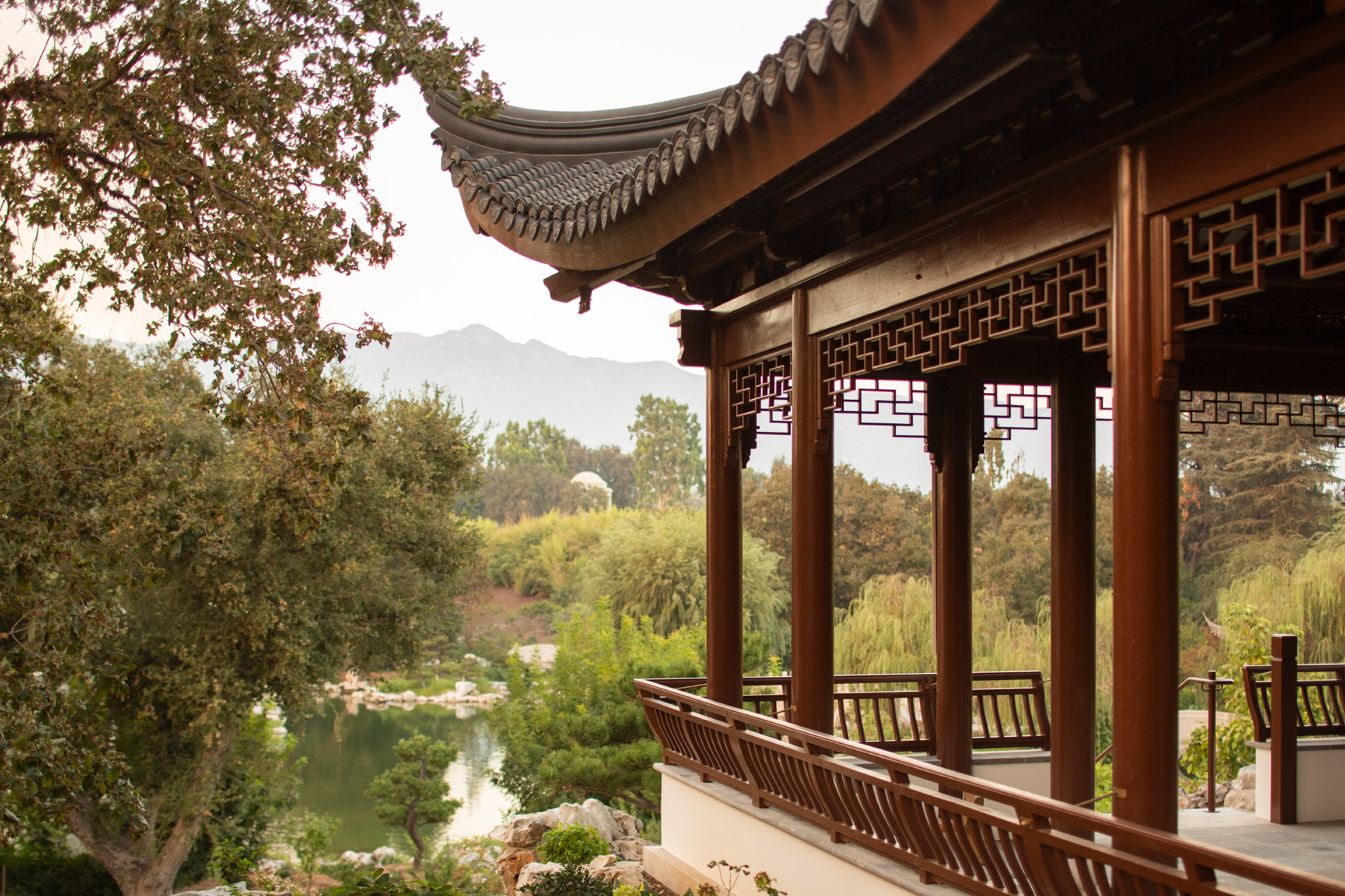
By May S. Ruiz
To say that it took a village and a few decades to create the Huntington Library, Art Museum and Botanical Garden’s Liu Fang Yuan (the Garden of Flowing Fragrance) wouldn’t be an exaggeration. And we’ll have the opportunity to see the completed project and revel in all the pleasures within when the expanded Chinese Garden opens on Oct. 9, 2020. And what a treat it will be!
Enjoy the arrival of fall meandering along lush landscapes, magnificent pavilions, and new attractions. Spread on 15 acres of land, 12 acres of which comprise a central garden, it features a bamboo grove on its western edge and a conifer forest to the north, making it one of the largest classical-style Chinese gardens in the world.
The Stargazing Tower is the perfect vantage point from which to view the gorgeous landscape below and the beautiful San Gabriel Mountains in the distance. This 527-square-foot pavilion is situated on the highest point in the garden at the southern end of the lake and evokes the Mount Wilson Observatory, which is visible from the tower, and the work of astronomer Edwin Hubble, whose papers are part of the Library’s holdings in the history of science.
Visit The Verdant Microcosm, the 17,900-square-foot area on the western slope of the garden designed for the study, creation, and display of penjing (miniature potted landscapes, similar to Japanese bonsai).
Take a breather at the aptly called Reflections in the Stream and Fragrance of Orchids Pavilion, which is shaded by mature California oaks near a gently flowing stream. The name of this 308-square-foot pavilion brings to mind the legendary gathering of poets at the Orchid Pavilion in Shaoxing in 353, immortalized by the great calligrapher Wang Xizhi, who wrote the preface to the collected poems.
Wander into the Courtyard of Assembled Worthies, a large patio paved with intricate pebble mosaics which links the existing Clear and Transcendent pavilion on the north side of the lake – the frequent site of concerts and performances – with the new exhibition complex.
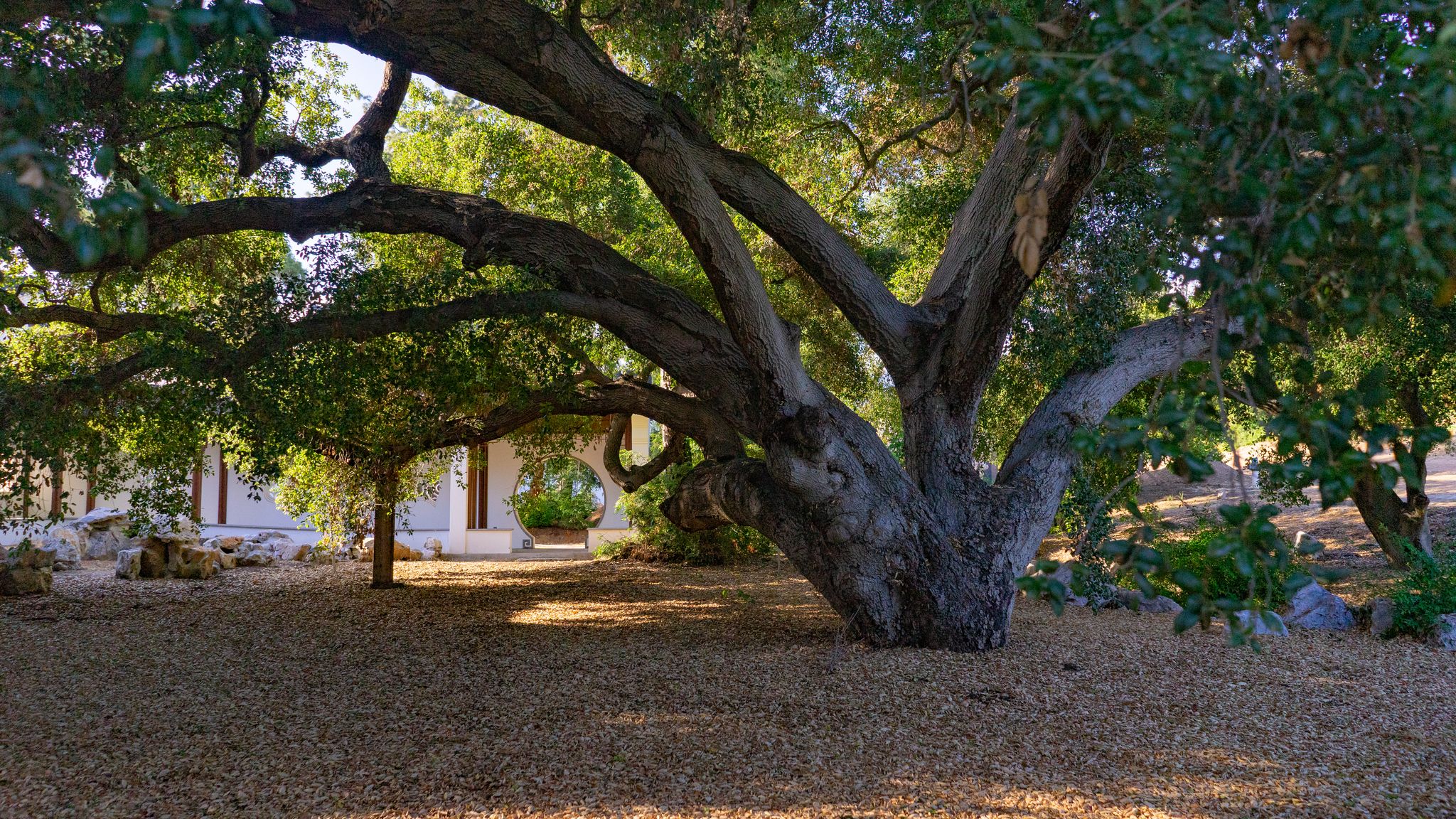
As you would correctly surmise, all these wonders are the culmination of the yearslong work of countless experts and contributions from numerous individuals. In a pretaped interview, Phillip E. Bloom, June and Simon K.C. Li curator of the Chinese Garden and director of the Center for East Asian Studies, expands on what went into the garden’s creation.
Bloom reveals, “The idea for the Chinese Garden came about more than 20 years ago when Jim Folsom, the Telleen/Jorgensen director of the Botanical Gardens, began conceiving of a garden where he would showcase common American garden plants that are actually Chinese in origin. But as he learned about what a Chinese garden is and how it typically incorporates architecture, calligraphy, poetry, sometimes even painting, he began to understand that having plants alone would never be sufficient.
“It was a cross-cultural effort which began with The Huntington collaborating with Chinese American designers in the San Gabriel Valley in the late 1990s. In the early 2000s, we began working with a design firm in China. Since 2004 we also worked with a construction company based in Suzhou, China to build the actual garden which was done in three phases – from 2004-2008; 2012-2014; 2018-2020. The completion of the project took over two decades, involved more than 2,200 donors, probably over 150 artisans from China, innumerable subcontractors and laborers from the U.S., as well as 150 docents, and two or three different curators.
“On the construction aspect, at any one time, there typically were three or more languages being spoken – English, Mexican Spanish, Mandarin, and the Suzhou dialect. The workers had to learn to collaborate with each other despite their linguistic differences so there tended to be a lot of sign language being used on site.”
Bloom discloses further, “The Chinese American community played a major role in its creation. Before there was even a design for the Liu Fang Yuan, Jim initially consulted with the Chinese American community to understand, first of all, what a Chinese garden is and, more importantly, how it can serve the area around it. In the 1980s, the population of San Marino changed quite dramatically; today 70 percent of its population is of Chinese American descent. So it became imperative for The Huntington to create a garden that would be meaningful to the people who live in the area.
“Subsequently, these residents have become supporters either as donors, docents, or members of The Huntington. Many of them come to the garden every single day for their morning walk. It has also become a vital educational space. Students from various school districts in the San Gabriel Valley frequently come to the garden to learn about Chinese culture and how it is being adapted in an American context, to see examples of Chinese art which we feature periodically in the garden.”
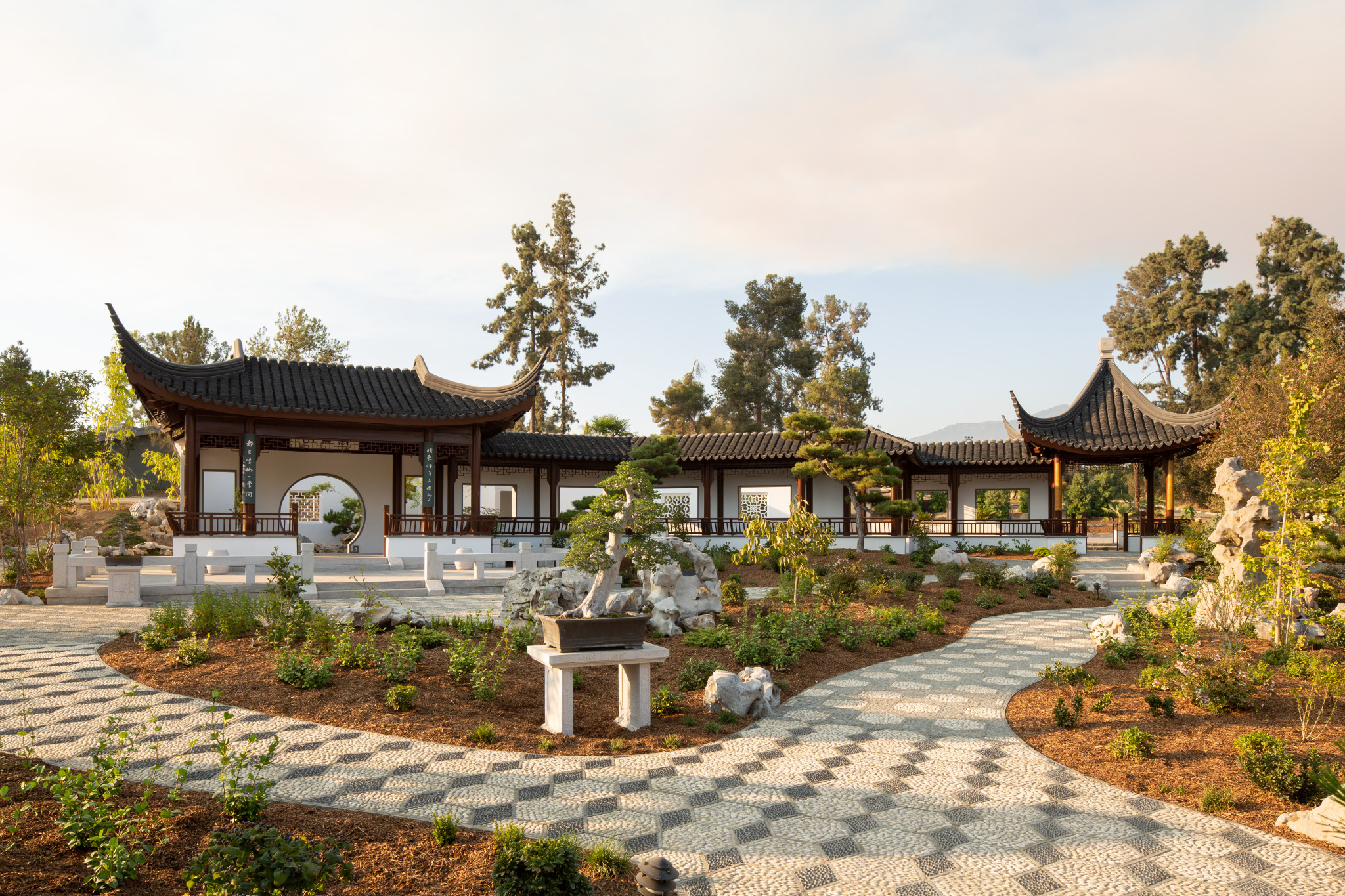
As to what sets the Liu Fang Yuan apart and makes it noteworthy, Bloom explains, “Physically, the garden is unique because of its site. Southern California has a relatively dry climate so they had to plant it quite differently from what is typically done in Suzhou. It has also been adapted to local building and audience requirements. The garden itself, although it looks traditional, was designed to be able respond to its environment – the buildings are earthquake-resistant – and the needs of an American public – they are wheelchair- and stroller-accessible.
“Additionally, we have chosen to include an art gallery and a reproduction of a Ming Dynasty scholar’s studio. Through these spaces, we’ll be able to engage in exciting cultural activities and public educational programs. Eventually, students can come in to the studio and pick up a calligraphy brush and experience pre-modern scholar lifestyle.
“Most importantly, through the Center for East Asian Garden Studies, we’re able to offer a monthly lecture series on East Asian garden history, mount exhibitions periodically that bring art into dialogue with the garden, stawge performances directly from China as well as other places in the United States occasionally to perform traditional music as well as modern adaptions of such. There is no garden – to my knowledge – anywhere in China that is supported with scholarly and public programming.”
Liu Fang Yuan plays a significant role in promoting understanding and appreciation of East Asian garden culture, according to Bloom. He elucidates, “Our programming allows Americans to better understand East Asian garden culture and Chinese Americans to have a different perspective to learn about their own culture from scholars. Every month we have a lecture on East Asian garden history. Periodically we hold concerts, we bring artists, through an artist residency program, we actually create artwork in the gardens.
“Our initial exhibition, called ‘A Garden of Words,’ displays the original works of calligraphy we used to create the name placards on the buildings and scenic features and poetic couplets throughout the garden. Before any of these Chinese inscriptions were written on wood, stone, or tile, they existed as works on paper created by about 35 different contemporary artists from around the world, including China, Taiwan, Hong Kong, the U.S., and the U.K.
“At the same time, the garden itself functions remarkably well as a place of cross-cultural understanding with the scholar’s studio – where people can sit and try to do calligraphy or play the guqin – and art gallery and where we’ll have exhibitions that will provide an artistic perspective on Chinese garden culture. In the western expansion we created a massive, new penjing court where people would be able to compare Chinese penjing and Japanese bonsai.
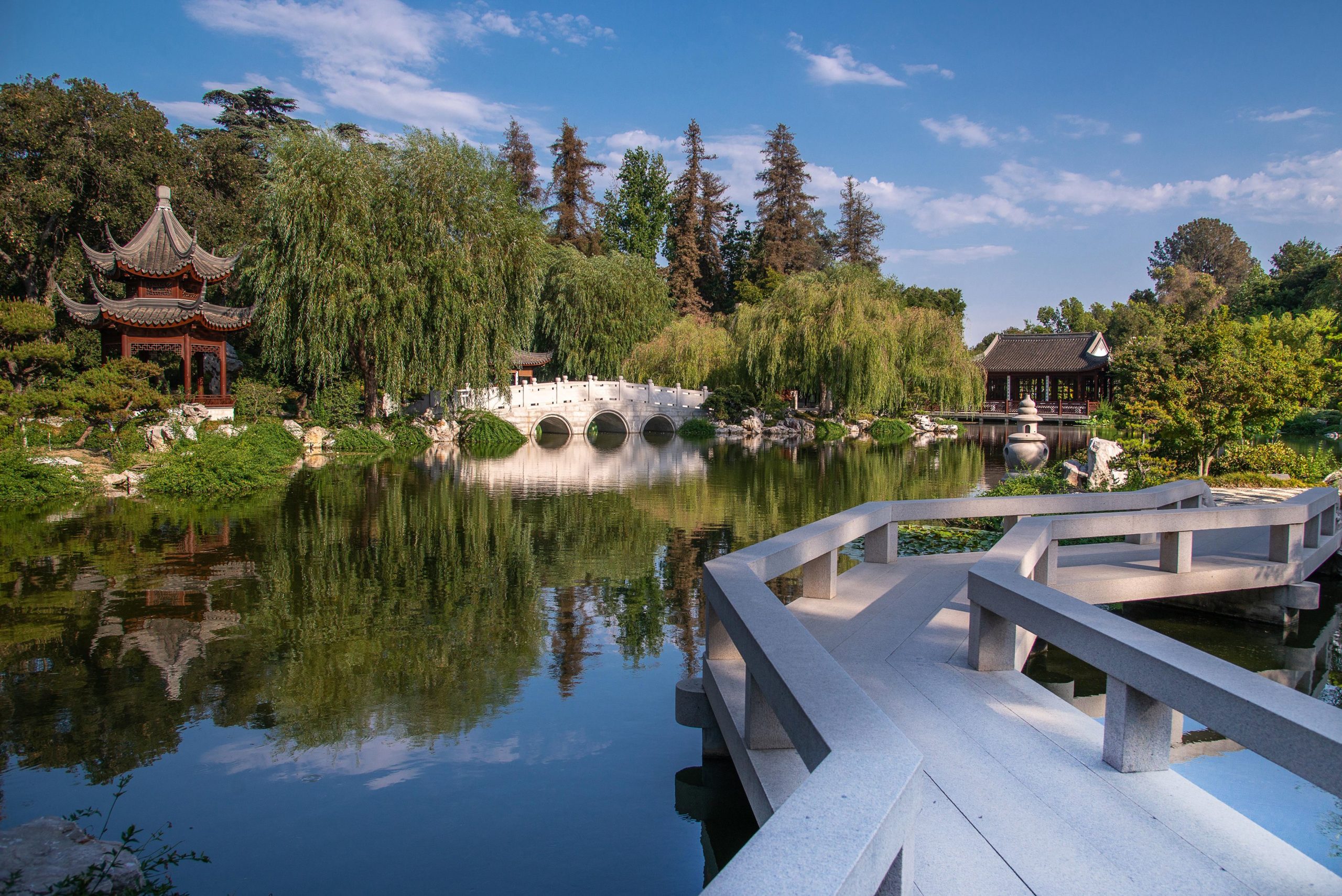
A press release issued by The Huntington’s Communications Office describes the indoor spaces, which Bloom mentions, to open later: The art gallery, Studio for Lodging the Mind, a 1,720-square-foot climate- and light-controlled building at the northern end of the garden that will showcase changing exhibitions of Chinese artworks, both contemporary and historical. The gallery’s inaugural exhibition will feature ‘A Garden of Words: The Calligraphy of Liu Fang Yuan,’ will open in May 2021.
There’s the Flowery Brush Library adjacent to the gallery, a hall designed in the style of a scholar’s studio –a garden retreat traditionally used to create paintings and calligraphy. Also in this north section is a new casual restaurant with outdoor seating, known as the Pavilion Encircled by Jade. And a large open space overlooking the lake, the Terrace of Shared Delights, will be used for banquets, festivals, and other gatherings.
Cultural programming slated to coincide with the opening will include a virtual screening of the video ‘Fragrant Rhythms: The Seasons of Liu Fan Yuan’ by artist Tang Qingnian, on Sunday, Oct. 11, at 4 p.m. The video was produced during Tang’s residency as the Cheng Family Visiting Artist in 2019. The screening will be followed by a conversation with the artist and soundtrack musicians Wu Man (who composed the score) on the pipa (lute) and Kojiro Umezaki on the shakuhachi (bamboo flute). Presented on the Zoom videoconferencing platform, the screening is free with reservations, available at huntington.org/calendar.
Online lectures related to the opening will include: ‘The Pleasures of Chinese Gardens’ by curator Phillip E. Bloom on Thursday, Oct. 8, at 4 p.m., and ‘The Past and Future of The Huntington’s Asian Gardens’ by James Folsom, on Thursday, Oct. 29, at 4 p.m.
In addition, a special display of orchids throughout the Chinese Garden will celebrate the debut of the expanded features. Many of the flowers will be drawn from The Huntington’s own extensive orchid collections, supplemented by blooms from local orchid societies and commercial exhibitors. The display is tentatively scheduled for Oct. 16–18.
After being confined indoors for seven months remote learning and working from home, we’re longing to finally see what’s out there. An outing to Liu Fang Yuan fits the bill perfectly!







































































































